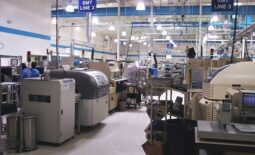Industry clusters in Mexico define the country’s economy
As of the first half of 2020, cumulative foreign direct investment (FDI) in Mexico totaled approximately US $18 billion. Of his figure, manufacturing comprised a 42.8% share, trade contributed 12.9%, and real estate and rental services made up 3.9%. This information about industry clusters in Mexico is according to data provided by Mexico’s Secretariat of the Economy.
Investments in these three sectors are both, directly and indirectly, related to Mexico’s industrial real estate market. This includes the purchase or rental of real estate for manufacturing or logistics uses. This movement in the real estate market has given way to a concentration of different economic sectors in specific regions of the country. The trend has optimized the development and shape of what is known as industry clusters in Mexico.
For the most part, the industry clusters in Mexico that have been located in specific regions over time are automotive, aerospace, food and beverage, medical and electronic devices, to name a few. These groupings have resulted in a boost in overall national productivity, an increase in global competitiveness, a more dynamic and incentivized system of supply chain, and more closely integrated and consolidated industry value chains.
All of this has contributed to Mexico’s positioning as The United States’ leading trading partner. Similarly, interest by global companies to invest in the country as a result of the recently implemented trade treaty between the United States, Mexico, and Canada (USMCA) has increased.
Automotive industry clusters are in Mexico’s Bajío and the Northeast
The automotive sector is the most important for the manufacturing industry in Mexico. In 2019, the value of vehicles that were exported to the United States was approximately US $38 billion.
The automotive and auto parts industry cluster in Mexico is located in about 14 of the country’s states. Automotive suppliers are located principally along the border region and in Mexico’s central Bajío region.
In recent years, the lower-western region of the Bajío has become a principal automotive production area in the country. The states that make it up (Aguascalientes, Guadalajara, Guanajuato, Querétaro, and San Luis Potosí) have an accumulated aggregate demand for more than 23 million square feet of industrial space. This was allocated mainly to manufacturing activities from January 2014 to August 2020.
This industry cluster in Mexico is the market that is mostly associated with auto parts according to the National Auto Parts Industry Associations (INA). Companies such as Aceway and the tire company, Bridgestone, for instance, have recently increased their footprint in the country. This industry cluster in Mexico has been the one that has had the most gross absorption of industrial properties in the last 6 years, with almost 8 million square feet. A good portion of this industrial space is located in the submarkets of Airport, El Marqués, Querétaro Centro, and Norte.
Guanajuato’s automotive cluster is comprised of OEMs such as General Motors, Volkswagen, Mazda, Honda, as well as companies engaged in the manufacture of auto parts. The market demand for industrial real estate has been more than 6.25 million square feet since 2014. This industry cluster in Mexico is located mainly in Celaya, Leon, and Irapuato.
In the northeast, the markets of Monterrey, Saltillo, and Reynosa have a significant stake in the automotive sector. These markets had a gross absorption rate in this industry of about 14 million square feet from January 2014 to August 2020.
The Monterrey cluster consists of first, second, and third-tier suppliers, as well as logistics companies. This market had a demand of just below 14 million square feet in the last six years. The Saltillo, Coahuila cluster focuses on auto parts production. In the same period, Saltillo had a demand for space from the automotive industry of almost 5.4 million square feet.
In addition, the Mexico City market also has a significant stake in this industry cluster in Mexico, since, starting in 2014 to date, automotive-related industry has had a demand for more than 9 million square feet of industrial space for manufacturing and logistics. This has been the case mainly in the corridor that includes the municipalities of Cuautitlán, Tepotzotlán, and Tultitlán (CTT).
However, the automotive sector is expected to receive a significant additional boost resulting from the implementation of the new USMCA rules of origin, which state that automobiles must have to increase regional content to 75% in order to be considered originating in North America and to receive duty-free treatment in the free trade zone.




